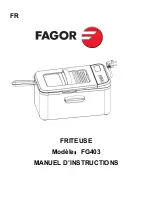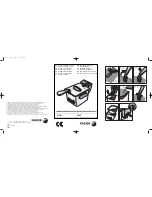
16
www.insigniaproducts.com
INSTALLATION INSTRUCTIONS
Duct requirements
Exhaust hood types
If you install your dryer into an existing exhaust system you must make
sure that:
• The exhaust system meets all local, state, and national codes.
• You do not use a flexible plastic duct.
• You inspect and clean all lint buildup from inside the existing duct.
• The duct is not dented or crushed.
• The exhaust hood damper opens and closes freely.
WARNING:
You are responsible for correctly installing the exhaust system.
• Use a 4-inch (10.2 cm) diameter rigid aluminum or rigid galvanized steel duct.
Do not use a smaller duct.
• Ducts larger than 4 inches (10.2 cm) in diameter can result in increased
accumulation of lint.
• Lint should be removed regularly.
• If you must use a flexible metal duct, use the type with a stiff sheet metal wall.
Do not use a flexible duct with a thin foil wall. A serious blockage can result if
the flexible metal duct is bent too sharply.
• Never install any type of flexible duct in walls, ceilings, or other concealed
spaces.
• Keep the exhaust duct as straight and short as possible.
• Secure joints with duct tape. Do not use screws.
• Plastic, flexible ducts can kink, sag, be punctured, reduce airflow, extend
drying times, and affect your dryer’s operation.
• Exhaust systems longer than recommended can extend drying times, affect
dryer operations, and collect lint.
• The exhaust duct should end with an exhaust hood that has a swing-out
damper to prevent back drafts and entry of wildlife. Never use an exhaust
hood with a magnetic damper.
• The hood should have at least 12 inches (30.5 cm) of clearance between the
bottom of the hood and the ground or other obstruction. The hood opening
should point down.
• Never install a screen over the exhaust outlet.
• To avoid lint buildup, do not exhaust the dryer directly into a window well.
• Do not exhaust under a house or porch.
• If the exhaust duct must run through an unheated area, the duct should be
insulated and slope slightly down towards the exhaust hood to reduce
condensation and lint buildup.
• Inspect and clean the interior of the exhaust system at least once a year.
• Unplug the power cord before cleaning.
• Check frequently to make sure that the exhaust hood damper opens and
closes freely.
• Check once per month, and clean at least once per year.
Note:
If your clothes are not getting dry, check the ducting for obstructions.
• Do not exhaust the dryer into a wall, ceiling, crawl space, or concealed space
of a building, gas vent, or any other common duct or chimney. This could
create a fire hazard from the lint expelled by the dryer.
• Do not use non-metallic flexible ducting.
• To reduce the risk of fire, your dryer MUST BE EXHAUSTED OUTDOORS.
















































